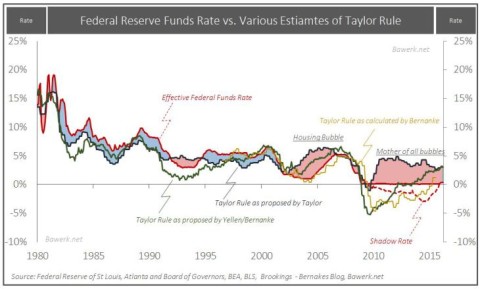 In the 1970s economists started to incorporate rational expectations into their models and not long after the seminal Kydand & Prescott (1977) article named Rules Rather than Discretion: The Inconsistency of Optimal Plan was published. Their work has been driving the mainstream macroeconomic debate ever since. The question raised in this debate is how policy-makers can credible commit to promises made today when future events may cause short-term pain if restricted by stringent rules from taking action?
In the 1970s economists started to incorporate rational expectations into their models and not long after the seminal Kydand & Prescott (1977) article named Rules Rather than Discretion: The Inconsistency of Optimal Plan was published. Their work has been driving the mainstream macroeconomic debate ever since. The question raised in this debate is how policy-makers can credible commit to promises made today when future events may cause short-term pain if restricted by stringent rules from taking action?
For example, in the Treaty on the Functioning of the European Union Article 125 it clearly states that ‘the Union [or any Member States] shall not be liable for or assume the commitments of central governments, regional, local or other public authorities…’ it also says in Article 123 that’[o]verdraft facilities or any other type of credit facility with the European Central Bank or with the central banks of the Member States… …in favour of Union institutions… …shall be prohibited, as shall the purchase directly from them by the European Central Bank or national central banks of debt instruments.’Both rules are there to credibly commit to not bail out EU nations either through ECB inflation or with other member states tax euros. Needless to say, after SMP, OMT, ELA, EFSF, ESM, maturity extensions and interest rates reductions these rules turned out to be useless. Rational actors obviously adapt their behaviour accordingly as the European Union turns into tragedy of the commons where moral hazard abounds. Actually, the whole monetary union has been a monetary tragedy of commons since its inception as credit expansion in one country did not have any of the adverse effects associated with either falling exchange rates or gold outflows. The euro area essentially incentivises maximized inflation with no natural correcting mechanisms apart from gargantuan capital consumption that goes along with it.
This post was published at David Stockmans Contra Corner on May 24, 2016.

Recent Comments